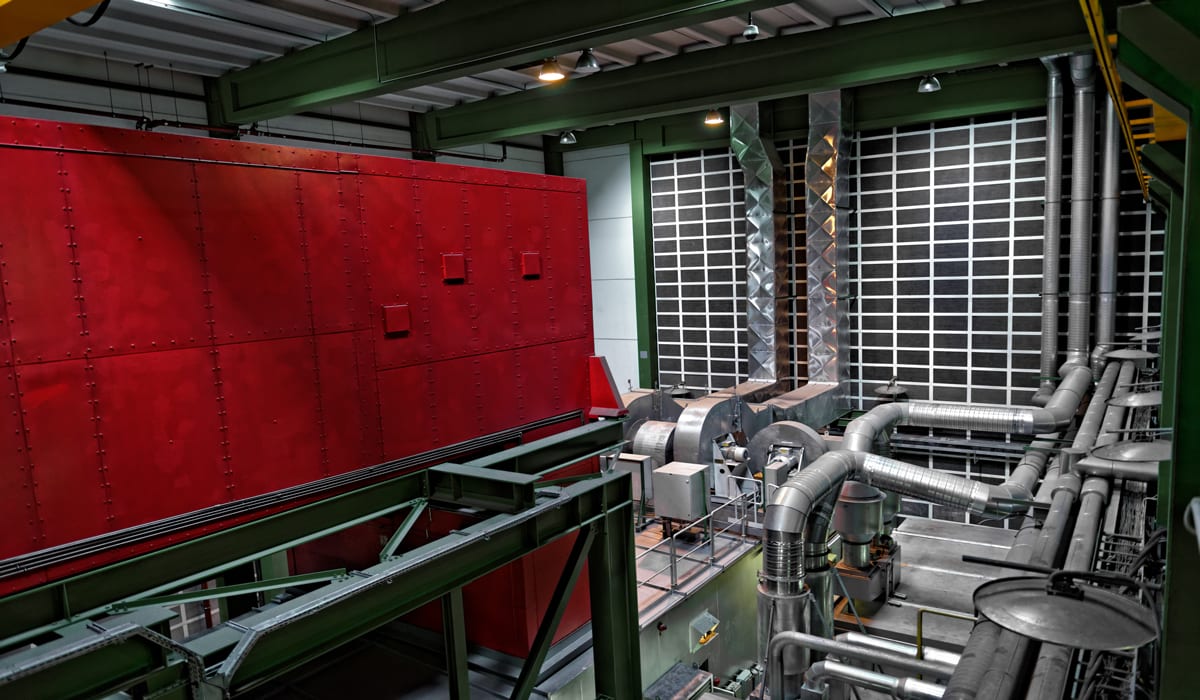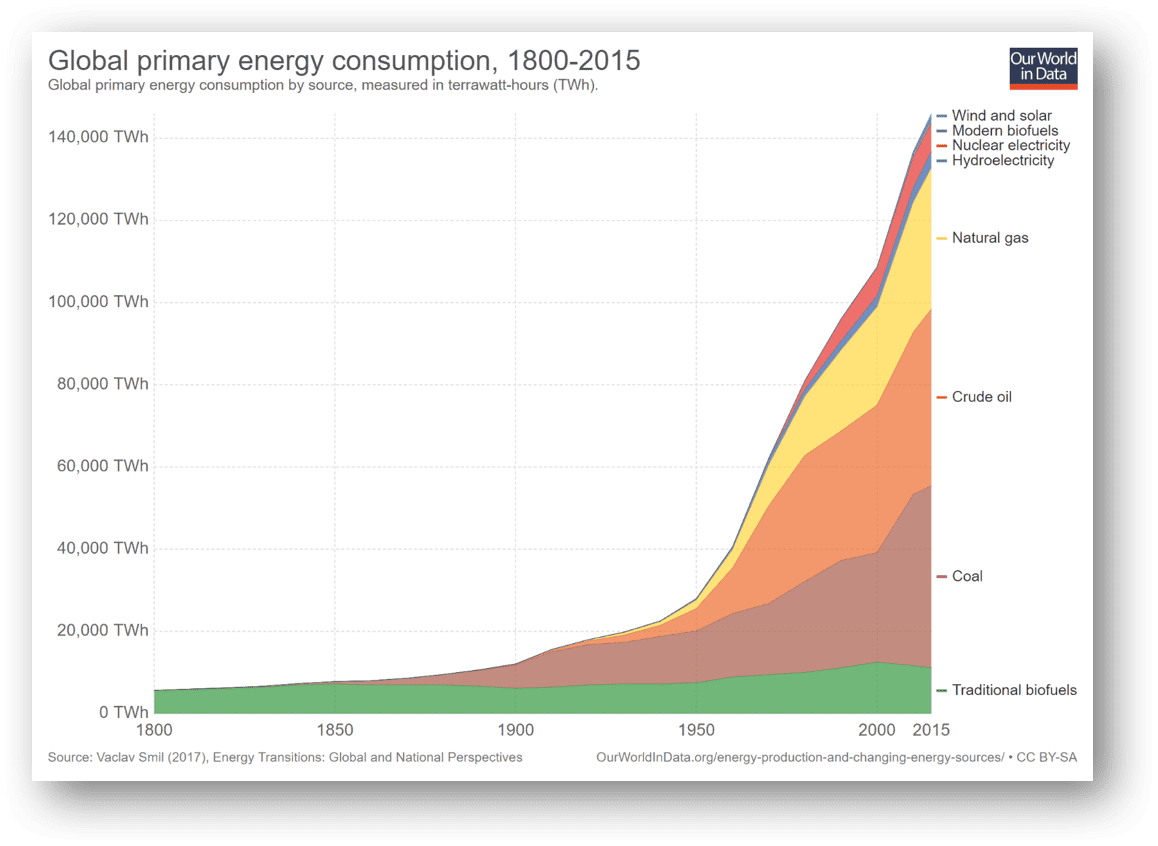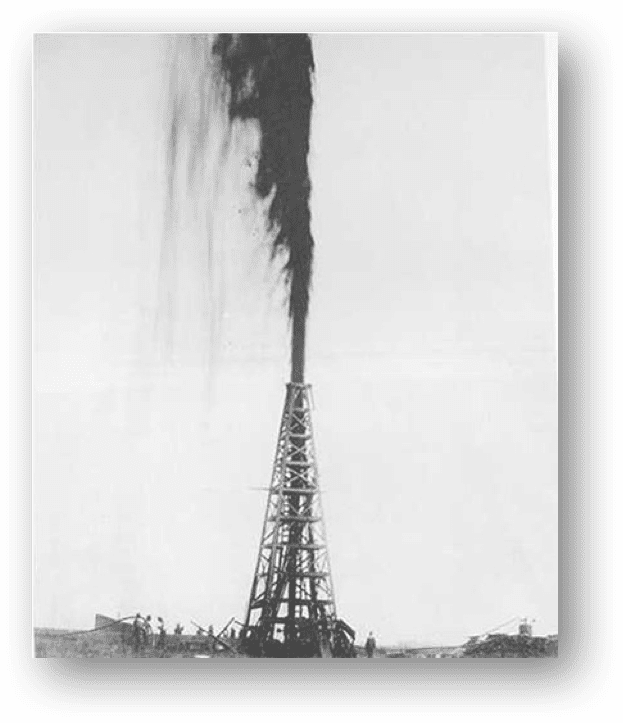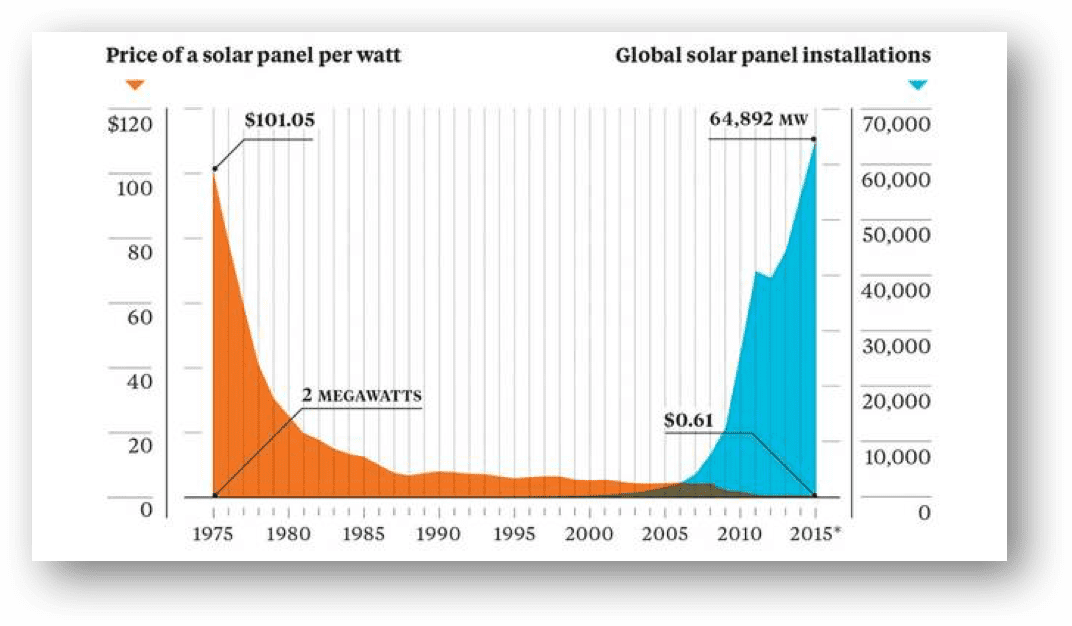This Small-Cap Tech is Revolutionizing… Well…Everything.
The world runs on electricity.
From washing machines to automobiles to homes to cities…
Electricity has been the bedrock of modern life since the early 1900s.
Sure, it has gone through several revolutions. Like the advent of coal, oil, and nuclear sources.
But the industry has always remained, essentially, the same…
Until today.
The business you are about to discover may just change everything…

In just a bit, we’re going to introduce you to a small-cap company who isn’t just working on the energy of the future, but bringing the energy of the future…
To the present.
And they are not even an energy company.
Huh? To understand this, you’ll first need the answer to a couple of questions…
What Exactly is Energy?
“We will make electricity so cheap that only the rich will burn candles.”
-Thomas Edison (Paraphrased)
To understand how this company is bringing “The Energy of the Future,” you must first understand the energy of the past.
And to understand “the energy of the past,” you will need to have a handle on energy in general.
This introduction is necessary to understand this incredible opportunity. It will be quick.
What is energy?

It’s a simple question.
Any reputable physicist or scientist could answer it.
But you would be surprised by how few investors can.
Just to be clear, the term “energy” here does not refer to an energy. This is not an explanation of energy commodities as it relates to agricultural or metals.
No, the question is, what is energy?
And why are oil, ethanol, and natural gas called energy commodities?
Well…
Energy is not lasers or lightning or forcefields.
Energy is simply the capacity of matter or radiation to perform work.
Energy is coal’s capacity to be burned.
Energy is fire’s capacity to create heat.
Energy is food’s capacity to be digested.
Energy is just the capacity of a substance to do something.
When you burn wood or kerosene or gasoline you are releasing the energy within that substance. It escapes as heat and kinetic force.
So, you can think of oil, natural gas, coal, and other traditional power sources as energy containers.
Hopefully that makes sense, because the next part is what people usually struggle with.
Electricity is just an energy container too.
That’s right. Electricity isn’t energy. It’s the flow of electrons from point “a” to point “b.”
Electricity is a substance—a substance that contains energy.
Just like oil.
Utility companies use electricity as a fast and effective way to transport energy to their customers.
They take messy energy containers that exist in nature, like coal, extract that energy, and imbue it in electricity.
They then use electricity to provide clean hassle-free energy to consumers.
So how does this process work?
The Law of Conservation of Energy states “that the total energy of an isolated system in each frame of reference remains constant—it is said to be conserved over time.”
In laymen terms, the Law of Conservation means that energy cannot be created or destroyed, only changed in form.
This means that utility companies are in the business of converting and transporting energy.
Now this conversion process has several steps, and it varies depending on the fuel source and generator type…
But usually it goes something like this…
You begin with materials that have chemical energy inside them, such as petroleum, coal, and natural gas.
You then convert that chemical energy into heat energy with combustion. (You burn it)
You capture as much of that energy as you can—but some always escapes when you do this.
And then you convert that heat into kinetic energy—which is the energy of movement. The energy of pushes and pulls.
You normally accomplish this by boiling massive troughs of water and using the resulting steam to push giant turbines.
You try to put all the energy to work—but even more energy escapes at this step.
Finally, you turn that kinetic energy into electric charge.
Converting kinetic energy into electric charge is accomplished with a process called electromagnetic induction.
All you need is a strong conductor, like coiled copper wires, and strong magnets.
Electricity is generated when a magnet is moved rapidly next to a stationary conductor. Or when a conductor is moved rapidly next to a stationary magnet.
That’s all a generator is—even the largest ones—a device that rotates its conductor rapidly around a magnet or vice versa.

Once again, in this final step, you’ll do your best to utilize all the kinetic energy, but due to forces like friction more energy still escapes.
Remember these three facts:
- Energy is the capacity of a material to do work and it is found inside of power sources like coal, oil, and natural gas.
- Utility companies move that energy out of those messy substances and ship it in electricity.
- A lot of energy is lost during this conversion process.
So, that’s a simple explanation of energy.
There are only two more pieces of the puzzle to put in place before you can get to the exciting part…
The Energy of the Past
“The Energy of the Past” can sound a little intimidating.
But fear not, you don’t need to know how Eskimos used whale blubber six-hundred years ago.
The term, “Energy of the Past” here refers to the recent past. No further back than electricity.
Although, humans have been wielding electricity for a while now…
186 years to be precise…
Nearly two centuries.
Fortunately, there haven’t been too many changes over the years so this will be quick.
Here is a short timeline of electricity production’s most important events in the years leading up to the digital age…
- 1831 Michael Faraday discovers the operating principles of electromagnetic generators. The first step to the age of electricity.
- 1879 Thomas Edison patents the lightbulb. The first device for consumers that makes use of electricity.
- 1882 Thomas Edison opens the first central power plant—coal powered of course.
- 1901 The Oil industry changes forever with the discovery of the massive Spindletop oil field in Texas. Oil prices drop more than 1000 per cent.
- 1930s Most homes in the United States, Canada, and the U.K. are “on the grid.” The only exception is very rural areas.
- 1950 Petroleum is no longer primarily used for electricity generation because of the advent of the automobile. The invention of the car made petroleum based fuels the most popular fuel source on earth.
- 1951 First electricity generating nuclear reactor is built in Idaho. Can only power a total of four light bulbs.
- 1950s Natural gas becomes a major fuel in the U.S. because of the construction of natural gas pipelines.
- 1957 First commercial Nuclear Power Plant goes online. Can power more than four light bulbs.
Consider the timeline above. It lists the most important achievements in global energy production before the advent of computers.
Take note of the fuel sources mentioned:
- Coal
- Oil
- Natural gas
- Nuclear
Now take a glance at the figure below.
 You’ll notice, as our timeline indicates, the major players in energy production have remained the same for decades. Coal, oil, and natural gas, along with a hint of nuclear, make up approximately 89 per cent of global energy consumption. Biofuels, such as wood, ethanol, charcoal, and biodiesel make up approximately 7.5 per cent of global consumption
You’ll notice, as our timeline indicates, the major players in energy production have remained the same for decades. Coal, oil, and natural gas, along with a hint of nuclear, make up approximately 89 per cent of global energy consumption. Biofuels, such as wood, ethanol, charcoal, and biodiesel make up approximately 7.5 per cent of global consumption
That leaves renewable energies, such as solar, wind, and hydro, with a tiny sliver of the market—approximately 3.5 per cent.
Renewable’s small portion of the market is intriguing, to say the least.
Why is it so small?
See, the chart above makes it appear as if renewables—their technologies and existence—were simply a late comer on the energy scene. The graphic makes it seem as if the technologies that allow us to capture energy from wind, thermal, solar, and hydro, were born into a world already dominated by fossil fuels…
But that is patently false.
When do you think alternative energy capture methods, like solar, wind, and geothermal were invented?
The late sixties?
The early seventies?
Even more recently?
Most people guess the seventies for solar and a little further back for wind and geothermal. Maybe the sixties or fifties…
But the actual dates for the major events in renewables might surprise you…
- 1831 Michael Faraday discovers the operating principles of electromagnetic generators. The first step to the age of electricity. This event was crucial for fossil fuels and renewables.
- 1876 William Grylls Adams discovers that one can generate electricity directly from the sun by exposing selenium to the light. 3 years before Thomas Edison patented the lightbulb.
- 1882 First commercial scale hydroelectric plant begins operating in Appleton, Wisconsin. 26 days before Thomas Edison’s coal powered plant in New York.
- 1888 First electricity generating Windmill built in Cleveland Ohio. 13 years before the oil boom in Texas created an unprecedented supply.
- 1921 First geothermal power plant is developed just outside of San Francisco. 30 years before the first nuclear power plant is built.
- 1927 First commercial wind turbines sold. Decades before the power grid would reach remote farms unable to afford gasoline for generators.
- 1953 First practical solar cell developed at Bell laboratories. Just in time for the exponential increase in energy demand of the 50s and 60s.
Compare the renewable energy timeline to the fossil fuels timeline.
You’ll notice that the dates are similar, almost identical at points.
That is because alternative energies technology has been advancing at a rate commensurate to fossil fuel technologies—for more than a century.
And yet…
3.5 per cent as of 2015.
If the technology has existed for years…
And the energy sources themselves, light, wind, and water have always been available in unlimited abundance…
Why have renewables always been such a small percentage of the global power supply?
To answer that question, you must consider the final piece in our puzzle…
The Energy of the Future
What is “The Energy of the Future?”
Or, rather, what is “The Energy Source of the Future?”
Well…
We can be certain that the eventual “Energy of the Future” is a renewable.
It won’t be coal or oil or natural gas.
We can be sure of this for two reasons:
- Because, one day, fossil fuel resources are going to run out. One-hundred years… One-hundred-fifty years… Two-hundred…They will not last forever. Additionally fossil fuel resources will become less economic long before they disappear entirely. As the deposits of fossil fuels near the earth’s surface are depleted—regardless of how much is left deeper down—the excavation process will grow more expensive—driving the costs of the traditional energy sources skyward.
- Additionally, the race for renewable energy involves more than just making sure humanity has a fallback for when the fossil fuel well runs dry.Most experts agree that burning fossil fuels isn’t…great for the Earth—or the people who live on it.It’s difficult to argue with the toxic evidence in China.

Natural gas is better than coal and it burns fifty per cent cleaner…
But it’s safe to say that most people still don’t want to live in fifty per cent of that mess.
So, assuming the “Energy of the Future” isn’t going to make our planet a wholly unpleasant place to live—you can assume that the “Energy of the Future” is going to be found in renewables.
So, two questions remain.
- Which renewable energies are going to be critical in the future?
And…
- When will these renewable energies begin to dominate the energies market?
The answer to the first question is simple:
Q: Which renewable energies are going to be critical in the future?
A: All of them.
Iván Martén is the global leader of The Boston Consulting Group’s Energy practice, one of the “Top 25” most influential consultants in 2013, and an adviser to CEOs and top management teams at fortune 500 companies, governing bodies, and regulatory agencies.
Concerning which renewable energies will take the spotlight in the foreseeable future Martén says this…
“Looking at the global picture, therefore, I do not believe there will be one winning renewable technology. Rather, there will be a healthy mix that depends on specific regional factors. We expect that by 2020 there will be at least one major competitive renewable energy source in most countries. The exact future mix will vary by region, depending on the availability both of renewable resources and grid infrastructure and on their contribution to the local economy.”
Admittedly, there’s a lot in that quote. But what does it mean?
Well, it talks a little bit about a nation’s capacity to restructure their power grid and the effects on the economy.
But the meat of Martén’s message concerns which power sources will gain international prominence in the coming years.
When Martén says, “There will be a healthy mix that depends on specific regional factors…” all he means is…
Windy places will probably rely on wind power.
Sunny places might prefer solar.
Places with volcanic activity will possibly utilize geothermal.
It’s common sense really. Renewable energies take advantage of regional topography and climate. Different places have different topographies and climates therefore, they have different renewable resources to utilize.
So, that answers which renewables will rule the energy market in the future.
It brings us to the second question when? When will they take over the market?
This question is a little more difficult to answer.
But it’s not impossible.
Let’s look at this chart again, specifically, let’s look at crude oil.
 Glancing at this chart, you would never guess it, but crude oil came into mainstream use in the early 1800s.
Glancing at this chart, you would never guess it, but crude oil came into mainstream use in the early 1800s.
It was mostly used as a fuel for lanterns.
Sure, it could have been burned in train engines, and generated mass demand…
But it could not compete with coal.
Coal was cheaper. Coal was easier to mine. And coal already had entire industries built around it.
There was no competition.
Until…
1901.

In 1901 Texans discovered the Spindletop oil field when the Lucas Gusher erupted.
This surge of crude oil in the American markets caused the cost of oil to drop drastically. Oil’s price per barrel to drop from $2.00 (today $54.07) to $.03(today $.81).
This rise in affordability changed everything.
Within seven years an entrepreneurial businessman, named Henry Ford, had built a new industry on the back of crude oil—automobiles. Within four decades oil became a multi-billion-dollar industry, and petroleum became the most used fuel source in the US.
So, how does the history of the oil industry relate to renewables?
Well, the rapid rise of oil illustrates an important principle in the energy market.
When an energy source becomes cost-effective—its market cracks open.
And it does so blindingly fast.
That’s why John D. Rockefeller went from a poor entrepreneur to a business magnate net-worth equal to 2% of the U.S. GDP in only a little more than forty years. When oil hit its stride Rockefeller’s dominance in the sector caused his value to double, triple, and quadruple several times over.
Now, to answer the question…
When can you expect renewables to experience their exponential growth surge?
The answer is…
Renewables will experience an exponential growth surge when they become undeniably cost effective.
Just as oil did in the past.
Just as natural gas is doing now.
The Company that is Bringing the Energy of the Future to the Present
Remember that utility companies are in the business of converting and transporting energy.
Primarily, cost effectiveness for converting energy, fossil fuels or otherwise, come down to two main factors…
- Supply of resources. The higher the supply the cheaper the energy becomes. This can be clearly seen in the lifespans of the oil, coal, and natural gas industries. These fossil fuels became more cost effective when larger and easier access to supply was discovered.
- Incumbent technologies. The less expensive and more effective the technologies for collecting a particular energy source become, the less expensive that energy source.
The cost effectiveness of fossil fuels depends more on supply then technology. The crude oil spikes of the 20s, 30s, and 40s demonstrate this truth. There was no specific leap in oil retrieval technology that pushed down the cost of oil to less than 2 per cent of its former vale.
Meanwhile, the cost effectiveness of renewables—such as solar and wind—are primarily impacted by technology advancement—rather than supply—since the supply of renewables can be thought of as constant and limitless.
As the technologies involved with renewable energies advance and the cost of microchips, building material, and construction declines the cost per unit of energy production drops.
Also, the better the equipment becomes—the more energy a single panel or windmill or plant can produce—the more cost-effective construction becomes.
The chart below illustrates how much the cost of producing a watt of energy via solar has gone down in the last forty years.
![]()
 This cost reduction in solar has had a near exact, inverse reaction to solar’s success as an energy source. The cheaper solar has gotten—the more popular it has become.
This cost reduction in solar has had a near exact, inverse reaction to solar’s success as an energy source. The cheaper solar has gotten—the more popular it has become.
So, finally, you are probably wondering about the small-cap company that could change everything…
Recall, that the company in question isn’t an energy company.
Yet it is a small-cap bringing the energy of the future to the present.
How can a company bring the energy…yet not be an energy company?
Introducing…
EXRO Technologies Inc.
Canadian Trading Symbol (CNX: XRO)
US Trading Symbol (OTC: EXROF)
EXRO Technologies is a stock that trades on the Canadian Securities Exchange under the symbol XRO.
EXRO Technologies is not a Tesla or a Solar City.
EXRO Technologies is not a Distributor of Alternative Energy; It is the Distributor of a Proprietary Tech that is Making It Feasible.
Remember earlier when you learned what energy is and how utility companies are in the business of converting energy from one form to another—and then transporting it?
Remember how a large portion of the energy produced is lost during the conversion process? How inefficient generating electricity really is?
The inefficiency of the electricity generating process is even more prevalent for renewables than fossil fuels.
That is because it is near impossible for renewable energy systems to be set up optimally.
This is because systems that harness renewable energy are subject to consistent variable change.
 Take wind power for example.
Take wind power for example.
The wind may blow at thirty miles per hour for thirty minutes and then seven miles-per-hour for forty-five minutes. And then it may become an eighty-mile-per-hour gale.
Obviously, this change in wind speed will affect the speed of a wind turbine…
Herein lies the problem…
A turbine, whether it is wind, coal, or natural gas runs most efficiently at a singular speed. When the turbine spins above or below that speed, energy is lost.
Now with fossil fuel systems, the peak efficiency speed of the turbine can be carefully maintained by controlling the amount of source burnt and thus the pressure turning the turbine.
But wind turbines are turned by the ever-changing wind.
Which means speed is not constant.
Unnecessary energy loss has plagued wind-power since its beginning in 1888.
In fact, unnecessary energy loss still plagues many other critical technologies as well.
This has caused a marginalization of viable energy sources for years—with little hope in sight.
That is…
Until EXRO created DPM—and revolutionary generator.
DPM, the Future of Global Energy?
What is DPM?
Remember that utility companies are in the business of converting and transferring energy from one “container” to the next. And that the process is never perfect? Because some—and often a lot—of energy is lost?
Well…
DPM stands for Dynamic Power Management.
And it makes alternative energy production smarter, more efficient, and more cost effective by reducing the amount of energy lost during a “container transfer.”
It sounds small. Simple. Menial, even.
But DPM might just change the world.
Here is a demonstration of its usage.
Take, for example, a wind turbine.

Obviously, the speed of a wind turbine is constantly changing—based on shifts in the velocity of the wind.
So, the traditional generator, that only runs at peak efficiency on one speed, has never worked well with wind as a power source.
Steps are currently taken to make sure the turbine does not surpass its optimum speed.
But nothing can be done to make electricity production more efficient if the turbine cannot reach that speed.
Nor is there a way to surpass normal productivity levels if the wind is especially strong one day.
Wind turbines are built to run correctly at one speed, no faster and no slower.
It is for this reason that wind turbines—although invented more than one-hundred-years ago—account for only 1.9 per cent of energy in the U.S., while the numbers for the rest of the globe are even smaller.
Simply put, wind turbines are too inefficient.
That inefficiency means that a wind farmer must compensate with quantity.
For a wind farm to rival the output of a single nuclear power station the farm must have more than thousand turbines.
More than a thousand.

The sheer number of windmills that must be purchased, built, and maintained drives the cost of wind-powered electricity upward.
And that’s in addition to the vast amounts of land on which they must be constructed.
Currently, a wind farm with as much productivity as a nuclear power station takes up approximately 2,000 times as much land.
2,000 times!
All of this is why wind—despite its age and renewability as a power source, takes up such a small share of the energies market.
This technological issue…This design flaw…has held back alternative energy for the better part of a century.
That is, until a man named Jon took a crack at it.
He did so, using DPM.
More on that in a bit.
First, a little bit about Jon.
The Man Redefining Energy Production
Jonathan Ritchey was a food scientist.
As in a man who studied the biology and chemistry of food.
So, what does he have to do with this report?
Well…
Jonathan was a food scientist with a deep passion for applied physics and inventing. Now he’s the founder of EXRO Technologies and is looking to disrupt energy markets all over the world.
Jon explains how EXRO came to be like this…
One night, Jon and his family were staying in a cabin. The cabin was off-grid, powered by a generator. Jon noticed that the generator was a making a lot of noise late at night while the rest of his family slept so he went outside to see if there was some way to turn it down—for it to produce less power and less noise as well.
He was surprised to find that there was no way to turn it down. The generator ran on one setting, no matter what.
Jon found that odd.
Why couldn’t he adjust the speed of the generator?
So, Jon started researching.
He soon found out that the structure of a generator dictates precisely which speed it must run at in order to efficiently produce electricity. This is just as true for a small domestic backup generator as it is for a power plant’s industrial turbines.
This is how generators had been produced for nearly two hundred years. No one questioned it. No one tried anything different…
Until Jon.
Jon’s first experiment with Dynamic Power Management (DPM) was simple.
He began working on a prototype: a small generator. But, unlike the generators up until that point, he did not use a simple copper coil.
Jon created many individual coils—and constructed a mechanism that could shift their placement. This was his first take on a generator with multiple configurations, each designed to maximize efficiency for a particular speed range of the turbine.
Once Jon had a functioning model he took his designs to a local clean technology institutional fund, Chrysalix. The people over at Chrysalix liked what he was working on so they gave him some money to build a better prototype and provide proof of concept.
Jon used that money to start the company that would, eventually, become EXRO.
Jon, and some of the guys from Chrysalix went down to a very specialized prototype shop in Kansas and started working on their full-scale model.
After several months of building, testing, and experimentation the group managed to prove Jon’s concepts on a larger scale. They had created a generator that could achieve optimal electricity generation at different speeds.
They had created the world’s first intelligent generator.
This was the first major update to generator technology since Nikola Tesla’s work with alternating currents in the 1800s.
Once they had a real proof of concept Jon’s fledgling company received funding, allowing them to snatch up patents, create more robust prototypes, and really delve into their game-changing tech.
And, thus, EXRO was born.
Of course, this was all years ago. The question remains, why should you care now?
Well, simply put…
The Stars are Aligning
DPM has some incredible implications for alternative energy sources like wind.
And wind is a big part of what makes this company’s tech such a strong long-term play.
The Global Wind Energy Council estimates that 18 per cent of the world’s electricity could be fueled by wind in the next 30 years.
EXRO’s proprietary tech could easily play a huge part in that—in fact, it could even bolster those figures.
But regardless of how popular or unpopular wind will be as a fuel source in the future…
EXRO’s technological accomplishments have immediate effects on markets that are hitting their stride—today.
Not a “distant possible future.”
Not markets with the “potential” for returns.
We’re talking about trillions of dollars in industry that exist right here, right now.
And EXRO’s about to make waves.
See, EXRO’s technology doesn’t just make wind a more viable power source. It also makes electricity generation more efficient for small motors and systems which seek to reuse expelled kinetic energy.
In other words…
Vehicles.
Cars, busses, boats, planes…
Any vehicle with electronic accoutrements and a battery could benefit from DPM.
How?
Well, DPM doesn’t just affect electric generators.
It also affects electric motors.
DPM in Electric Motors
A motor is essentially the opposite of a generator. It works on extremely similar principles and can look near identical. Rather than spinning a copper coil to generate electricity, a motor uses electricity to spin a copper coil.
That’s just about the only difference.
And EXRO’s technology can make that process more efficient also.
“Wait!” Doesn’t that mean EXRO’s technology has the potential to affect everything? Electric vacuum cleaners? Hair dryers? Washing machines? Couldn’t all these technologies be made more efficient?
The answer is…
Yes!
That’s how big this revolution is.
There’s just no need to look at all the markets EXRO has the potential to impact because the ones they’re going to affect first are the ones in most dire need of change.
Sure, perhaps, one-day, EXRO’s patents will be inside your vacuum cleaner.
But vacuum cleaner companies aren’t exactly in dire need of a more fuel efficient vacuum cleaner. Nor do Vacuum cleaners encounter all that much variable change.
But there are other industries a bit more concerned about power conservation and that have to deal with just as much, if not more variable change than wind turbines.
Automobiles.
Especially electric ones.
Electric cars have the biggest stake in EXRO’s technology.
The motors inside electric cars are different than those inside, say, a vacuum cleaner. The motors inside electric cars are called reversible machines.
They are both a motor—and a generator.
When accelerating, the reversible machine acts as a motor, providing torque and moving the vehicle along. When decelerating, the reversible machine acts as a generator, using the motion of the vehicle to generate electricity to replenish the car’s battery.
EXRO’s tech can make both of these processes more efficient, increasing the range and fuel efficiency of hybrids and pure electric vehicles.
Range has been a spear in the side of the electric car industry since the CitiCar of 1974—a vehicle that got 40 miles to the charge.
Now, Tesla’s longest-range vehicle gets 335 miles to the charge—a fair sight better than their ancestors but, nowhere near enough for Musk.

Musk has made it clear he wishes to see his flagship product hit the six-hundred-mile mark—more than some of the most efficient gas and diesel vehicles get per tank.
No doubt, doubling his vehicles’ range after all the accomplishments Musk has already achieved with the lithium battery will be a difficult puzzle…
EXRO may have the final picture for that puzzle—and a couple of the pieces too…
And that’s what EXRO is working on right now: proving the value of their technology to the commercial world at large.
And they could not have picked a finer first partner.
Northwest UAV Partnership

EXRO has teamed up with Northwest UAV, the leading supplier of propulsion systems to drones in the world.
Northwest UAV is a fixture in the most competitive realm of technological development—defense.
The government contracts for which U.S. defense corporations compete may be worth hundreds of millions, if not billions of dollars.
And, while the awarding of these contracts is strictly regulated, to encourage a free market and to cut costs with a vigorous bidding system—there is still one way for a contractor to ensure they are awarded contracts…
By being the only company to produce the necessary technology.
A “sole source contract” is awarded when there is no competition among suppliers.
If they are the only company with a particular technology or capability—then the company is awarded a “sole source” or “no-bid” contract.
For this reason, defense companies struggle to stay at the edge of technology and advancement—more so than even the average tech company.
When the military comes looking for the latest tech—the fewer companies who can provide it, the better it is for those who can.
Northwest’s interest in DPM and EXRO’s tech speaks volumes about the value of EXRO’s technology.
Few companies can design self-sustaining drones that can stay in the air as long as Northwest UAV’s, while simultaneously powering receivers, cameras, transmitters, and a host of other electronic equipment.
And they see EXRO’s technology as an opportunity to put even more distance between them and their competitors.
See, drones deal with an extreme amount of variable change. Between wind, acceleration, deceleration, turning various equipment on and off, take off, landing, and weather.
Electric powered drones have an especially difficult time with take-off. The requirements of a motor to get a drone off the ground and up to flight speed are quite a bit more robust than the requirements of the same motor to maintain flight.
EXRO’s technology is better at producing the necessary torque to get the drone into the air without needlessly straining the motor or wasting energy.
In other words. EXRO’s tech reduces wear on the drone, makes for more reliable takeoffs, and it increases flight time.
Understandably, Northwest UAV is excited about EXRO’s tech.
And they are just the first, with many more to come.
That’s because…
EXRO is Bringing the Energy of the Future…
To the present.
Recognize those words?
They have been stated several times throughout this letter. And with good reason.
See, the world is on the cusp of some pretty amazing things.
The automobile industry is shifting…
New major players are emerging in the global market…
Burgeoning energy sources are becoming prominent…
Technologies are being invented…
The world is shifting.
The goal, as always, is to find smart investments in this ever-changing environment. To help readers see the links and the logic between the financial and physical worlds.
EXRO’s technology isn’t going to bust continents or change landscapes—EXRO will leave that up to the Tesla’s and Musk’s of the world—disrupt everything or die trying.
EXRO is just going to take the shifting of the world…
And attempt to make it go a little bit faster.
Currently, wind farming is a $100 billion dollar a year industry. By 2050 that number may increase ten or fifteen times.
- EXRO could play a major role in retrofitting current farms… And provide critical technology for new ones.
The electric car market is booming as more and more automobile makers dive into this new market. Between now and 2019 eighteen new electric car models will be released by the largest automobile producers in the industry
- EXRO’s tech could be inside any number of those car’s next models.
Between Facebook and Amazon and the U.S. military, the pilotless aircraft market is expanding rapidly. Demand for drones is growing in the private sector as well as the public.
- EXRO’s ability to extend flight times and improve the motor performance could make some very powerful entities very happy.
This is how EXRO will help the world shift faster…
EXRO is not directly producing the industry changing technologies. They’re tech could just be in… well…
Everything.
It might be in wind turbines in Ireland…
In tidal stream generators in the Pacific…
In electric cars in America…
In drones over warzones…
Or, perhaps, maybe, one-day, in your vacuum cleaner…
The point is, some of the fastest evolving industries on the planet want something only EXRO can provide. They may not know it’s available yet—or recognize how much they need it.
But once they do?
Well…
EXRO probably won’t be sitting at C$0.50 per share for long.
So, final thoughts.
EXRO is rife with potential.
At a C$23 million valuation, EXRO is still a small company. And it will take time for the Company to advance its tech.
But EXRO’s tech, patents, and allure to large companies adds a near incalculable layer of value and potential for explosive growth.
Companies like EXRO, that provide invaluable pieces of technology to automobile companies like Tesla, or defense contractors like Boeing, or energy companies like GoldWind, need only land one client for their value to skyrocket.
And it’s very possible EXRO won’t be landing just one client.
It’s very possible they’ll land a couple.
And soon.
Afterall…
They are bringing the energy of the future, to the present.
Please contact Lyle McLennan at Exro for more information about this opportunity: 604 808 9221
Disclosure:
Investment ideas are unique speculative ideas and stories from our sponsor companies and may or may not be in our portfolio.
Please contact the companies directly after reading any of the stories to conduct your own due diligence.
This article is biased towards Exro Technologies Inc. (“Exro”) because the Company is an advertiser on www.equedia.com. We currently own shares of Exro. You can do the math. It’s your money to invest and we don’t share in your profits or your losses, so please take responsibility for doing your own due diligence and consult your own professional advisers before investing in Exro or trading in Exro securities. Equedia.com and Equedia Network Corporation are not registered as investment advisers, broker-dealers or other securities professionals with any financial or securities regulatory authority. Remember, past performance is not indicative of future performance. This article also contains forward-looking statements that are subject to risks and uncertainties that could cause actual results to differ materially from the forward-looking statements made in this article. For a complete disclosure of the compensation received by us from Exro, please review our Terms of Service and full disclaimer at www.equedia.com/terms-of-use/.












So we’ll written.
sad that they are using this into war toys of old people
very interesting
The thing that worries me about this is whether someone else is also working on this. I don’t know who the players are, but there is always a number of ways of doing the same thing. Someone like Westinghouse or GE might be developing something even more superior. Competition never sits still.
Why doesn’t this appear under Canadian Exchanges through my Investor Line account?
I cannot find that this stock is trading….
All please pardon my ignorance 🙁 This technology has all the characteristics of a true breakthrough. And I await its listing OTC.
what was the result of the Exro and Northwest UAV Partnership?